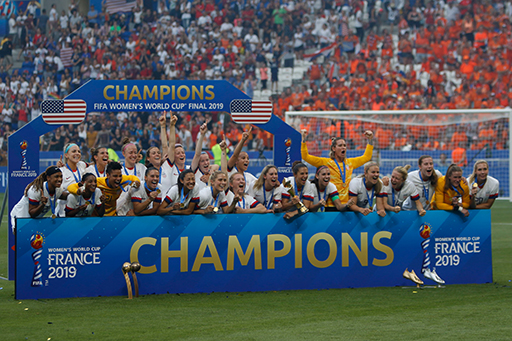4.2 Equal pay as a business issue
So far, the United States women’s national soccer team (USWNT) have won four FIFA World Cup tournaments and four Olympic Gold medals. They are the most successful national team in the history of women’s football. Comparatively they are more successful than the US men’s national team (USMNT) who have never won a major intercontinental competition. Despite this difference in success the women’s team have been paid significantly less than the men, an issue that members of the USWNT decided to challenge in court.

In the next activity you will discover more about the differences in pay between the US men’s and women’s teams and how they mirror the gender pay gap in professional sport more generally.
Activity _unit1.5.3 Activity 8 Striving for equal pay
Read the following article from The Guardian: Revealed: the $730,000 gender pay gap in US World Cup bonuses.
As you read, consider the following question: Who has the power to make the prize money between men’s and women’s international football more equal?
Discussion
The gender pay gap originates from the discrepancy in the prize money generated by the men’s and women’s World Cups. The men’s World Cup generated $400m in prize money in 2018 compared to $30m generated by the women’s World Cup in 2019. FIFA have the financial resources to make this prize money less unequal which would them enable national federations distribute the prize money more fairly.
The USWNT settled their legal case with US Soccer before it went to court. A new arrangement that rewards more fairly US men and women players is being developed. But the case highlights the business and commercial challenge of providing equal pay when prize money, that originates from sources such as broadcasting rights and sponsorship, is very unequal.
Football is not the only sport where there is a large gap in the amount of money earned by male and female professional athletes. It is a common issue and understanding the business reasons behind this pay gap is important. It is also another aspect of why the business of football is different to other businesses since legislation around equal pay between men and women for doing the same job does not apply to football.
